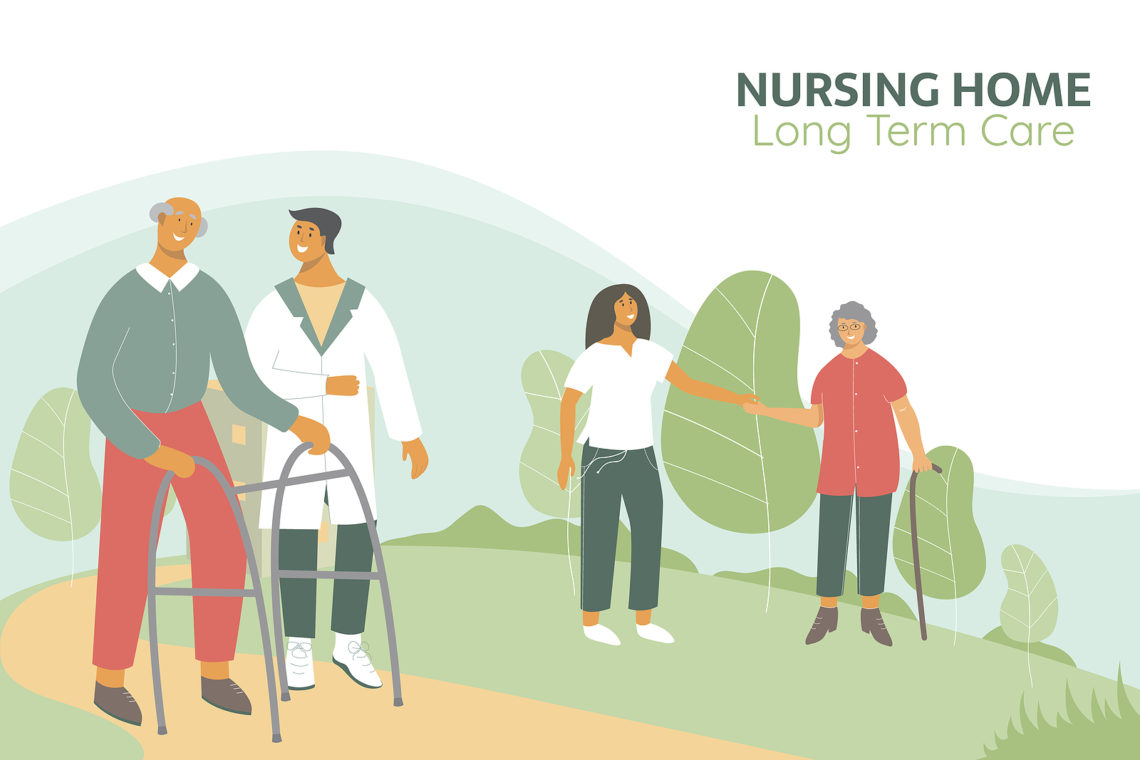
Long-term care is the care you need if you can’t perform daily activities on your own for an extended period of time. There are a number of different ways that long-term care can be provided.
Most long-term care involves assisting with basic personal needs rather than providing medical care. You are usually determined to need long-term care if you need help with two or more “activities of daily living” (such as bathing, dressing, eating, and going to the bathroom). Family members usually provide long-term care to start, but as an illness escalates paid care may become necessary.
The following are the types of long-term care:
- Home care from family member. The most basic form of long-term care is when a family member becomes the caregiver. It can involve simple tasks like buying groceries or more complicated ones like bathing and dressing. Sometimes family members can be paid for their work.
- Home care aide. Home care aides provide companionship and socialization and assist with meal preparation, housecleaning, laundry, shopping, and errands. They are also called homemaker or chore aides.
- Home health care aide. Health care aides provide personal care (bathing, grooming, etc.), assist with range-of-motion exercises, provide some medically-related care (empty colostomy bags, dress dry wounds, check blood pressure, etc.), and provide assistance with housekeeping and errands. They are often referred to as personal care assistants.
- Adult day care. Adult day care allows family members to get a respite from caregiving. In general, there are three types of centers: those that focus on social interaction, those that focus on health care, and special Alzheimer’s care centers.
- Assisted living facility. Assisted living facilities are a housing option for people who can still live independently but who need some assistance. Depending on the facility, that assistance may include help with meal preparation, housekeeping, medication management, bathing, dressing, transportation and some nursing care. Residents usually live on their own, in small apartments. Despite the emphasis on independence, supportive services are available 24 hours a day in order to provide different levels of help with activities of daily living. The level of medical supervision depends on the facility.
- Nursing home. Nursing homes are the highest level of long-term care. They provide 24-hour care to residents. Staff provide help with daily activities such as feeding, dressing, and bathing along with medical care and physical, occupational, and speech therapy.
The Cost of Long-Term Care
Costs for care can vary widely, from a few hundred dollars a week to pay for coverage when family members are at work to $300,000 or more a year for around-the-clock home care or care in the most expensive nursing homes, perhaps with private aides hired on the side.
Long-term care costs, whether at home, in assisted living or in a nursing home, are paid primarily from three sources. Costs are typically paid out-of-pocket, though Medicaid, or with long-term care insurance. Medicare, the health insurance for people over age 65, only pays for up to 100 days of skilled nursing facility care following a hospitalization, and only for so long as the patient is deemed to need skilled care. It will also pay for skilled care at home–in theory indefinitely, but this may take some advocacy. Duckett Law LLC is proud to offer long-term care planning. Please call or visit our website to schedule and appointment.








